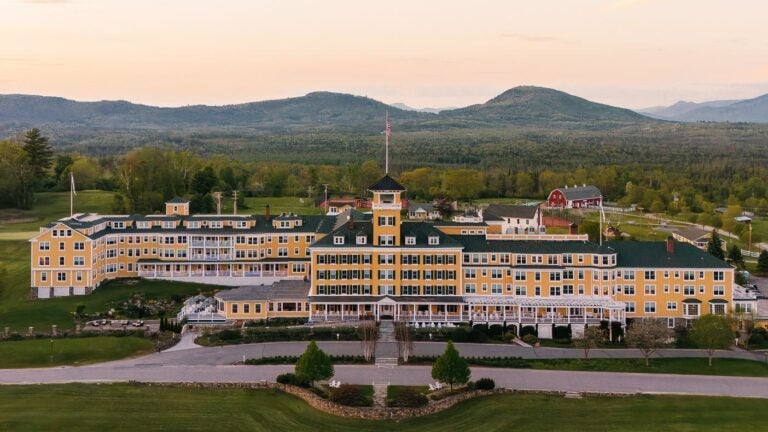I may be a little biased.But each time another friend posts photos of their trip to Paris on social media, I want to shake them a little. That’s not real France, I want to offer. Until you’ve left the Paris bubble of overdone — though cool — tourist attractions, you’ve not experienced the true heart of France, a wonderland with charms aplenty to rival Paris’ seductions.
Nashville’s French sister city offers the perfect starting point for your explorations of this real France. Caen is an easy two-hour train ride from Paris’ Gare Saint-Lazare, making it eminently convenient to add a couple days up north in Normandy to your next Champs-Élysées shopping trip.
Since my move from Nashville to France over a decade ago, I’ve lived around the country’s edges, acquiring more belongings with each subsequent move — from a tiny studio apartment down south in Aix-en-Provence, land of Cézanne and cicadas, to a one-bedroom furnished apartment in Pau, at the base of the lush Pyrenees mountains of France’s southwest, to my present comparative castle (two bedrooms, whoa!) up north in Viking territory. The France I’ve fallen in love with lives in these places.
When I arrived in Caen (pronounced like “con” with an ever-so-slight G sound at the end) three years ago, we were in the middle of the pandemic. Health passes were required, and curfews were in place. The famous Normandy beaches were one kilometer beyond my allowed travel radius from home. Add in trying to understand Norman-accented French through masks when I was used to southern-France French, and it wasn’t the best time to get to know my new town.
But since then, this city of just over 100,000 people in a 48-community metropolitan area of nearly 250,000 has gradually returned to normal life and claimed a spot in my heart. Using the term “metropolitan” is perhaps hyperbolic, though, when referring to the flat agricultural landscape that stretches across the Caen plain to the sea. It’s not unusual to catch a tractor lumbering through city streets, and many of the non-highway roads in the region only become two-lane thoroughfares after everyone slows down and hugs the ditches in order to squeeze past each other.
This firstborn of Nashville’s sister cities partnerships has begun the countdown to the grand events that will celebrate its millennium anniversary in May 2025. Caen was put on the map in the Middle Ages by William the Conqueror and his wife Matilda, who made it the capital of the Duchy of Normandy just prior to William’s 1066 invasion of England. The couple constructed a women’s abbey on the east side of town, a men’s abbey on the west side, and a castle in the center. All three are treasured parts of Caen’s present-day life and regularly the sites of community events.
From my apartment on the east side, I can see the tips of the Abbaye aux Dames church, built of the famous creamy limestone quarried here, and I frequent its park’s lime-tree-lined avenues. While the abbey buildings are now used by Normandy region administrators, the church is still a parish church — one that has caught my breath on many a walk as the afternoon sun makes its old stones glow and shadows encroach around it. However, it wasn’t until last year that I wandered with a friend up to the very front of the Norman-Romanesque-style church’s bright interior and discovered, quite by accident, that pious Queen Matilda is buried there beneath a black marble slab. My poor American mind struggles to comprehend such history that is almost literally in my backyard and part of my everyday life!

Unusual for their era, William and Matilda are remembered as having a true love story and true partnership in their endeavors. And that’s how they’re depicted in a bronze and brass sculpture by celebrated local artist Claude Quiesse, which caught me up short one day as I followed my usual walking route home from the artsy boutiques, clothing shops and cafes populating centre-ville’s pedestrian streets. How had I never noticed this elegance before? It turns out the elegance was new, and I’d just missed any fanfare around the sculpture’s installation at the foot of the couple’s castle — which dominates the center of town and is really more of a fort than a Versailles-style ornate edifice.
Tubes of metal depict the ancient power couple beside each other, atop horses and without weapons, creating a sense of strength and forward movement, as though the wind is blowing their robes and hair behind them. Placed as they are, their fortress’s commanding walls tower in the background, a testimony to their successes. The scene simultaneously tells an ancient story with modern threads. On sunny days, this panoply includes students and other Caennais lounging on the lawn outside the stone walls. Locals join the tourists, who climb the ramparts to enjoy a stunning panoramic view of the city.
In the shadow of the château is one of Caen’s (and my) favorite neighborhoods for a meal out. Charming both in summer, when the pedestrian street becomes a huge terrace tinkling with life, and in winter, when the half-timbered buildings give off cozy vibes as warm light escapes their windows, the Vaugueux offers a variety of restaurants. You’ll easily find something to suit your palate’s whims, whether it’s delicious classic crêpes with local cider, French comfort food, a gourmet burger, tapas or fusion fare.

Continuing west through the pedestrian center — if it’s before the 7 p.m. closing time — you can browse a wide range of independent and chain shops. Caen is still a bookstore and cafe town, though coffeehouses selling the true lattés I prefer are few, and a more traditional café crème must often suffice. Narrow Rue Froide begins alongside the Saint-Sauveur church and is nearly worth the visit to Caen on its own. Known as one of centre-ville’s oldest streets, its few blocks contain a bakery that often has a long line out the door, various concept stores and clothing boutiques, an épicerie selling local food products, and a hair salon or two, along with plenty of other window displays that will lure you inside.
On the west side of the town center, William’s majestic Abbaye aux Hommes is now the Caen town hall. Like the other institutions William and Matilda founded in Caen, this one has had many different uses throughout its long life, including sheltering up to 10,000 civilians as the Allies sought to retake Normandy during the summer of 1944. Located only about 9 miles inland from the British troops’ D-Day beach landings — the Americans were busy to the west — Caen was a key objective for the early hours of the Allies’ June 6 efforts. But its Orne river and canal waterways, plus its road and rail links, made it valuable to the Germans too. They weren’t about to give it up easily. Thus, the city suffered six weeks of destructive Allied bombings before the Germans were finally pushed out that July. Some 2,000 civilians died in Caen.
It’s this World War II history that most often brings Americans here, on their way to the famous Omaha and Utah beaches. Even 80 years later, war is a large part of this city’s story. Living here is teaching me firsthand about the long scars war writes on communities. The effects live on in the architecture, for example. Where Caen’s streets should be lined by Norman half-timbered buildings, only a few of those remain. For a long time, it was said that some 80% of Caen was destroyed that summer in 1944. However, experts have recently revised the number to 35%, taking into account the high percentage of housing destroyed while other elements of the town incurred less damage. The war’s effects also live in the family stories. A young Uber driver told me that his great-grandfather was among the French commandos who died storming the D-Day beaches with their American, British and Canadian counterparts. The family still goes together to lay flowers on his grave.

The waterways that set Caen in crosshairs during the war are among its charms today. The tree-lined Orne river cuts through town on its way northward, where it empties into the English Channel. The Caen canal parallels the Orne from the sea into the city, providing access to the in-town marina and various shipping ports, including the Ouistreham ferry port for connections to Portsmouth, England. In summer, the bars and restaurants across the street from the marina open popular patios on its quayside. The huge Sunday morning market’s booths of vegetables, knickknacks and regional delicacies stretch outward from the quay across town toward the château. Occasionally, live music or art installations breathe cultural life into the city from the marina. Both the river and the canal are popular venues for watersports.
One of my most delightful recent discoveries is the Orne river estuary, the spot where the river travels out of Caen to meet the English Channel. Landlocked as we are in Tennessee, the magic of this ecosystem where freshwater and saltwater join is new to me. It has become my French Radnor Lake, and though the terrain and nature that greet me along its paths are different from the Nashville version — replace deer and turtles with seals and swans — the effect is the same. The dunes, coastal mudflats and salt meadows provide a chance to breathe and relax, feeling far from the “metropolis” and its busyness — though in reality, it’s only a 15-minute drive from home, nestled among villages that are part of the Caen la Mer urban community. The estuary visitor center offers a robust calendar of programming for learning about the flora and fauna.
There’s so much more to tell you. But perhaps it’s best to leave some discoveries for you to make when you come to meet the place and the people who form this special corner of France — which is, after all, family to Nashvillians.










